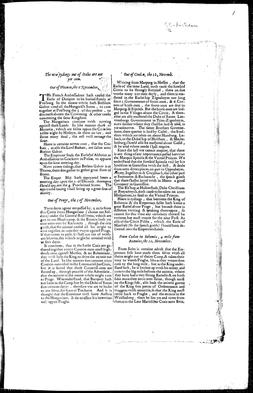| This article needs additional citations for verification. Please help improve this article by adding citations to reliable sources. Unsourced material may be challenged and removed. Find sources: "Coranto" – news · newspapers · books · scholar · JSTOR (August 2023) (Learn how and when to remove this message) |
| This article includes a list of general references, but it lacks sufficient corresponding inline citations. Please help to improve this article by introducing more precise citations. (August 2023) (Learn how and when to remove this message) |

Corantos were early informational broadsheets and precursors to newspapers. Beginning around the 14th century, a system developed where letters containing news and philosophical discussion were sent to a central collecting point to be bundled and redistributed to various correspondents. The banking house of Fugger was particularly known for its organized system of collecting and routing these letters, which often could be seen by outsiders. This method of disseminating news continued until the 18th century. The term "newspaper" was not coined till 1670; Prior to that, a variety of terms were used to describe this genre, including "paper", "newsbook", "pamphlet", "broadsheet", and "coranto".